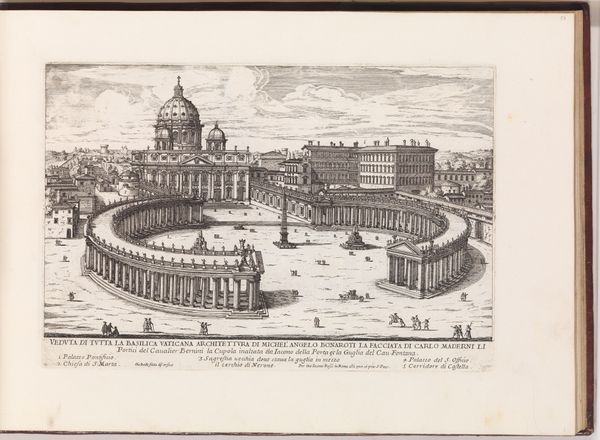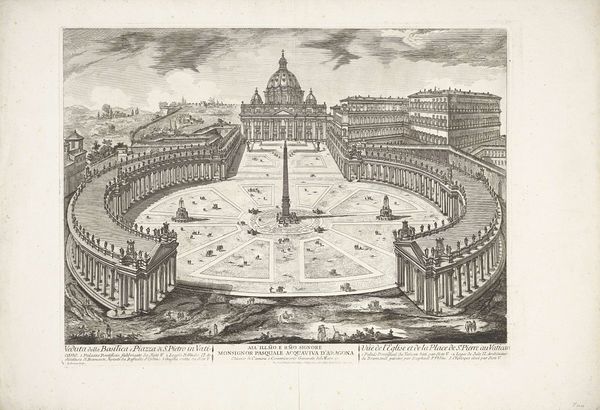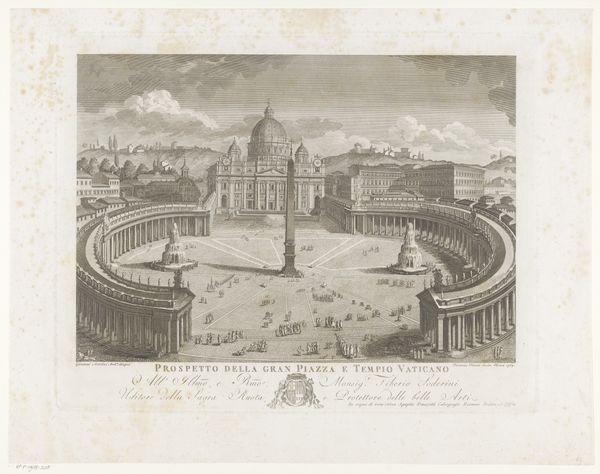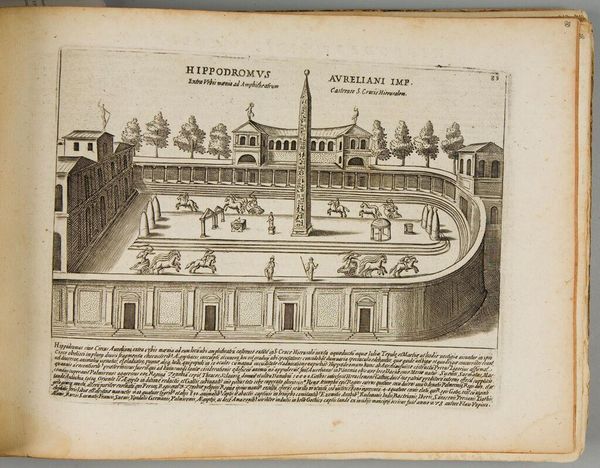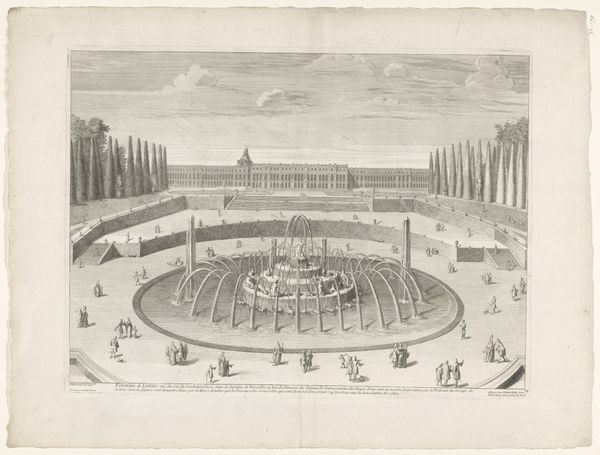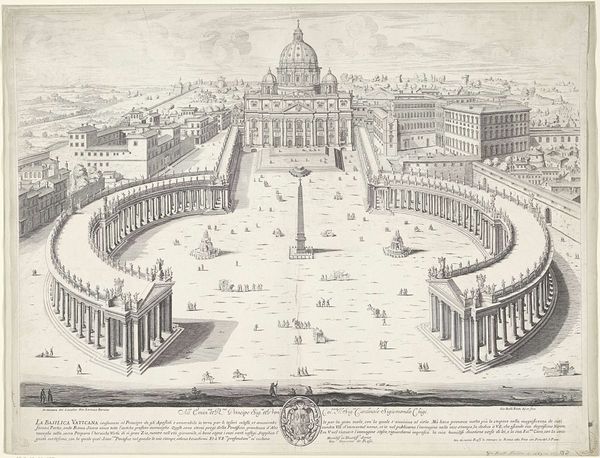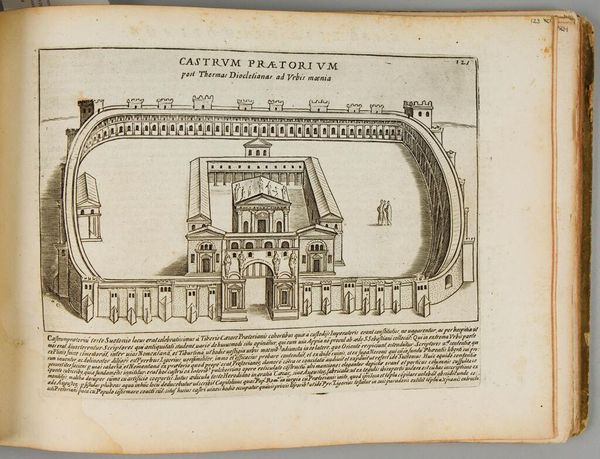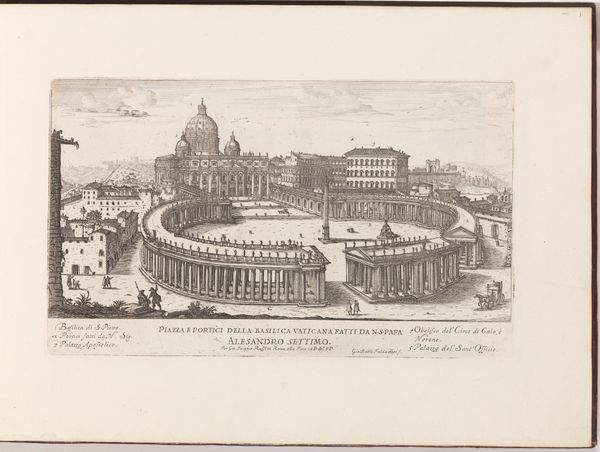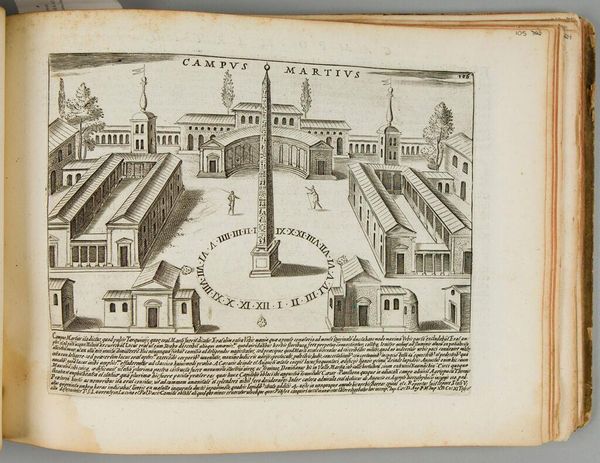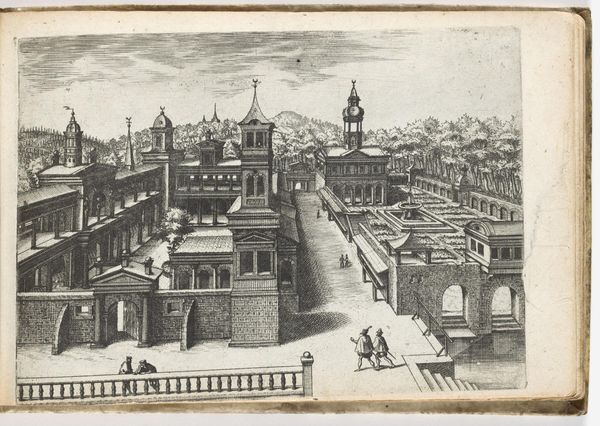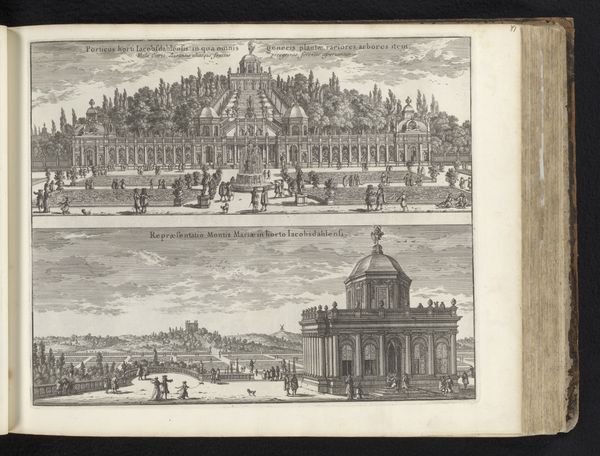
print, etching, engraving, architecture
#
baroque
# print
#
etching
#
cityscape
#
italian-renaissance
#
engraving
#
architecture
Dimensions: height 222 mm, width 296 mm
Copyright: Rijks Museum: Open Domain
Editor: So, this is a print called "Sint-Pieter te Rome," or Saint Peter's in Rome, from 1726 by an anonymous artist. It's a cityscape, created using etching and engraving. The scene has this impressive yet almost sterile feeling, maybe because it's so architectural. What do you see in this piece that I might be missing? Curator: Ah, yes! Sterile is one word for it. I might say "orderly". What grabs me first is the sheer ambition, the reach of the baroque spirit. It's a visual flexing of power, isn’t it? You get the impression of someone standing far back with a very precise, maybe even a mathematical, eye, capturing all the grandeur, every detail rendered with painstaking clarity. But is that clarity honest? Do you get a feeling of real life there, or just...ideals? Editor: It’s interesting you say that. The clarity, almost hyper-clarity, definitely mutes the ‘real’ feeling of the place. Like a dream of Rome. But why this distance, do you think? Curator: Maybe distance offers control? Baroque art loves drama, but it also adores order, right? Here, distance lets the artist arrange the composition for maximum impact – the embracing curve of the colonnade, the commanding dome. Do you think the small figures enhance the composition? Editor: I see what you mean! They're tiny, almost like afterthoughts. Maybe it emphasizes the vastness of the space, makes it more awe-inspiring? I hadn’t considered the manipulation aspect before. Curator: Exactly! This print whispers secrets about power, perspective, and perhaps, the curated nature of perception itself. I think my perspective on cityscapes is forever changed! What about you? Editor: Absolutely. I see now how even in something seemingly straightforward, like a cityscape, there are layers of meaning and intent waiting to be uncovered. This conversation has been an epiphany!
Comments
No comments
Be the first to comment and join the conversation on the ultimate creative platform.
